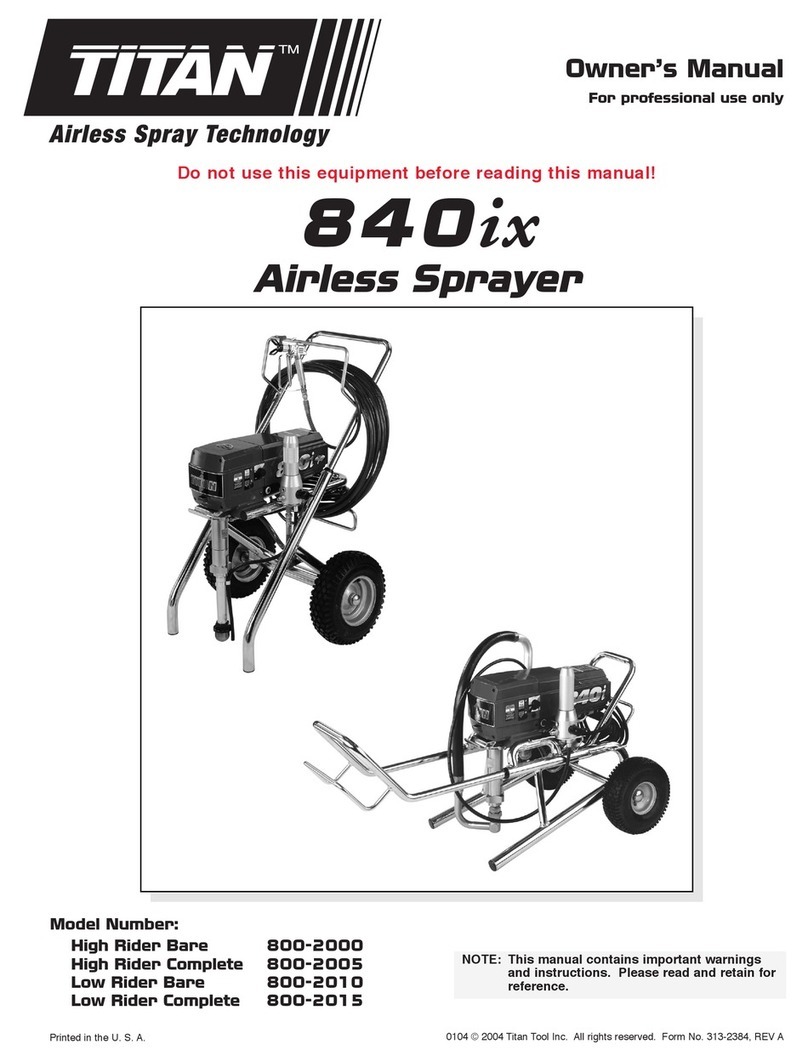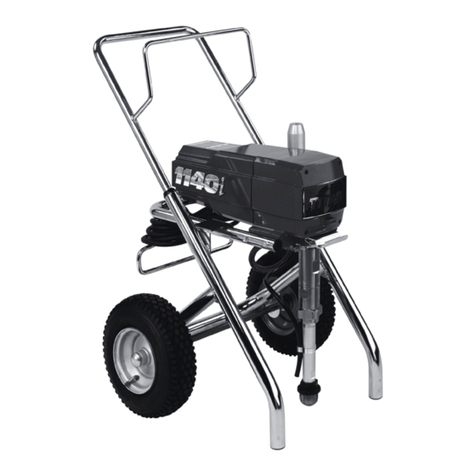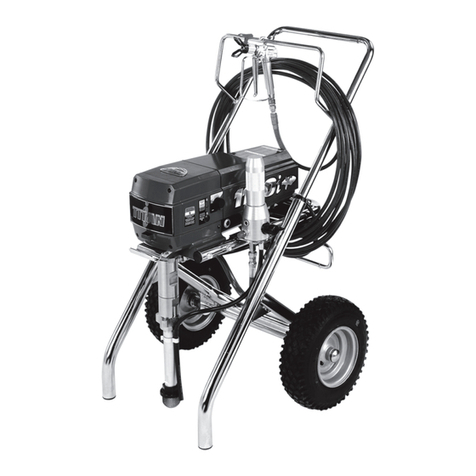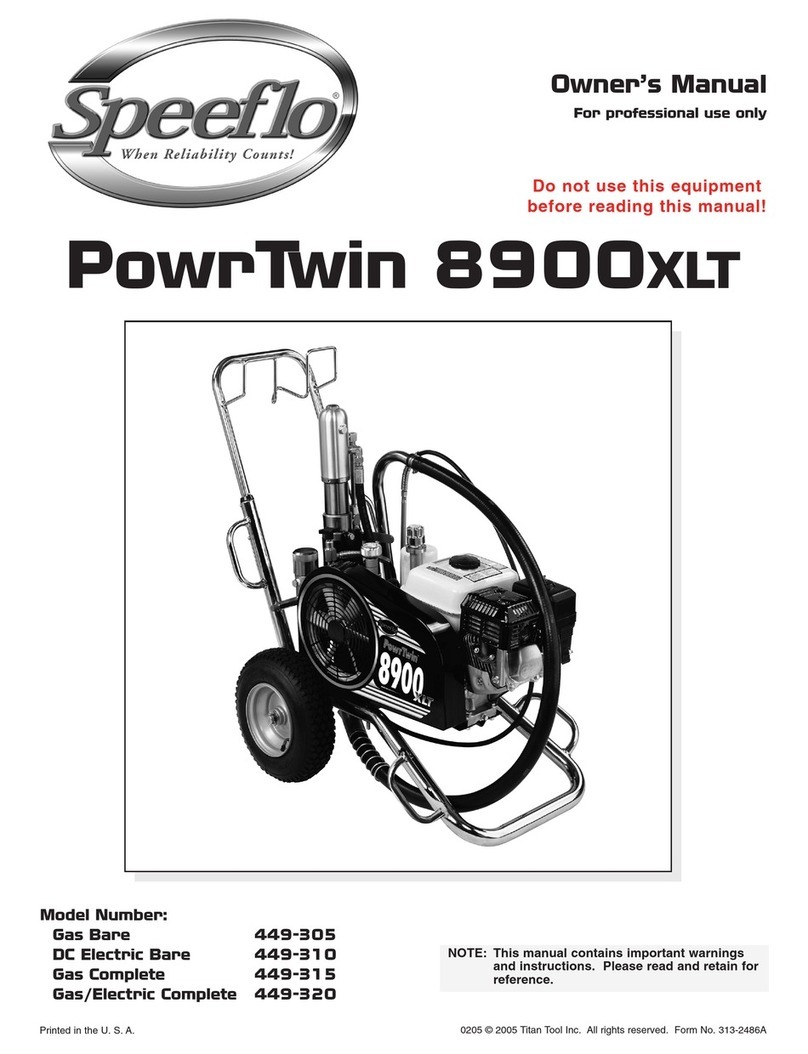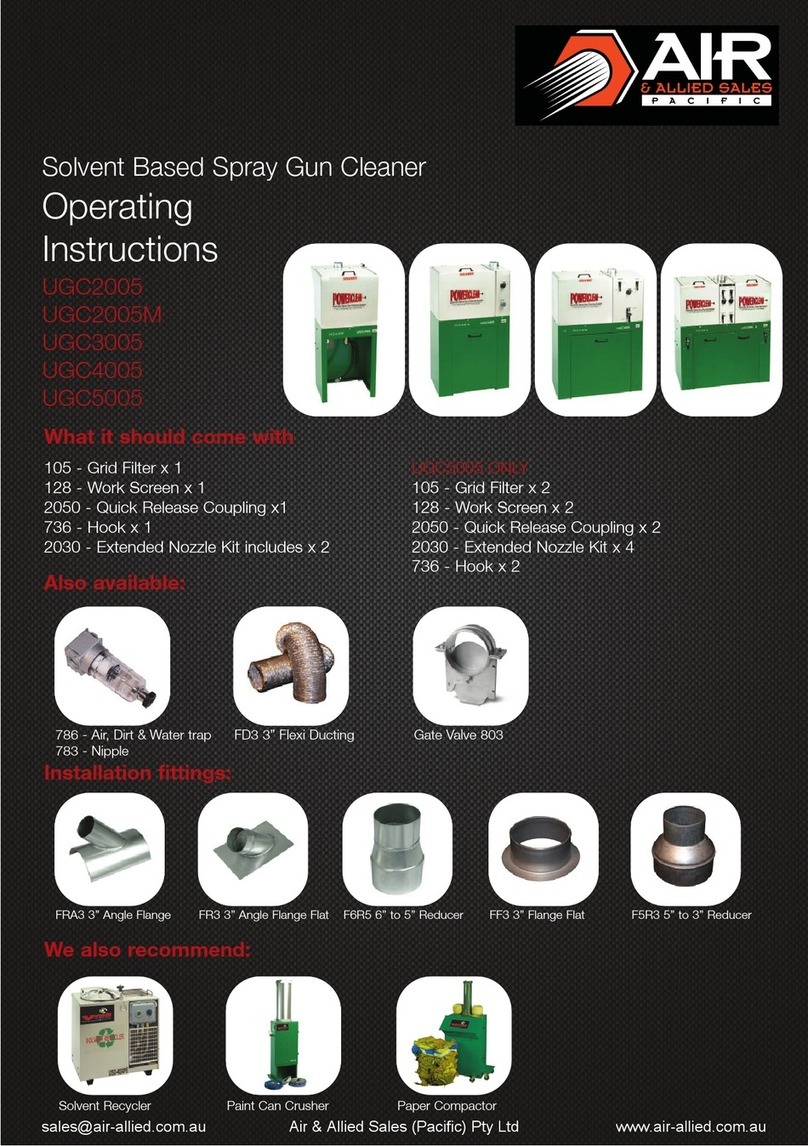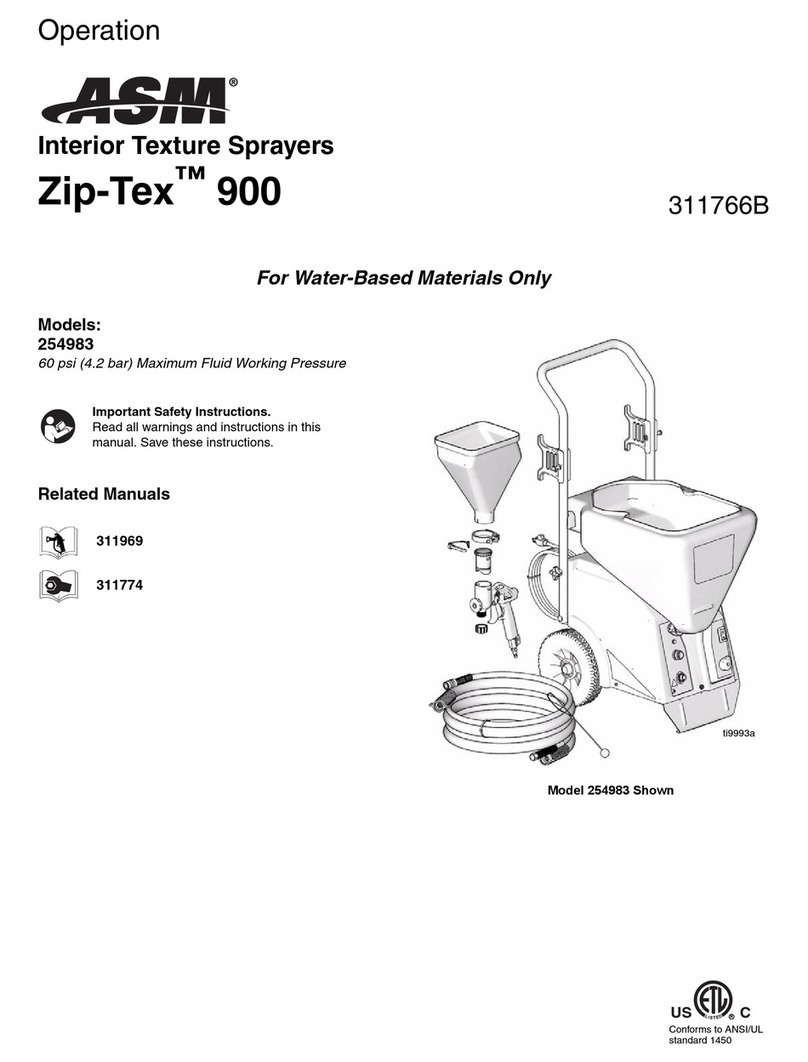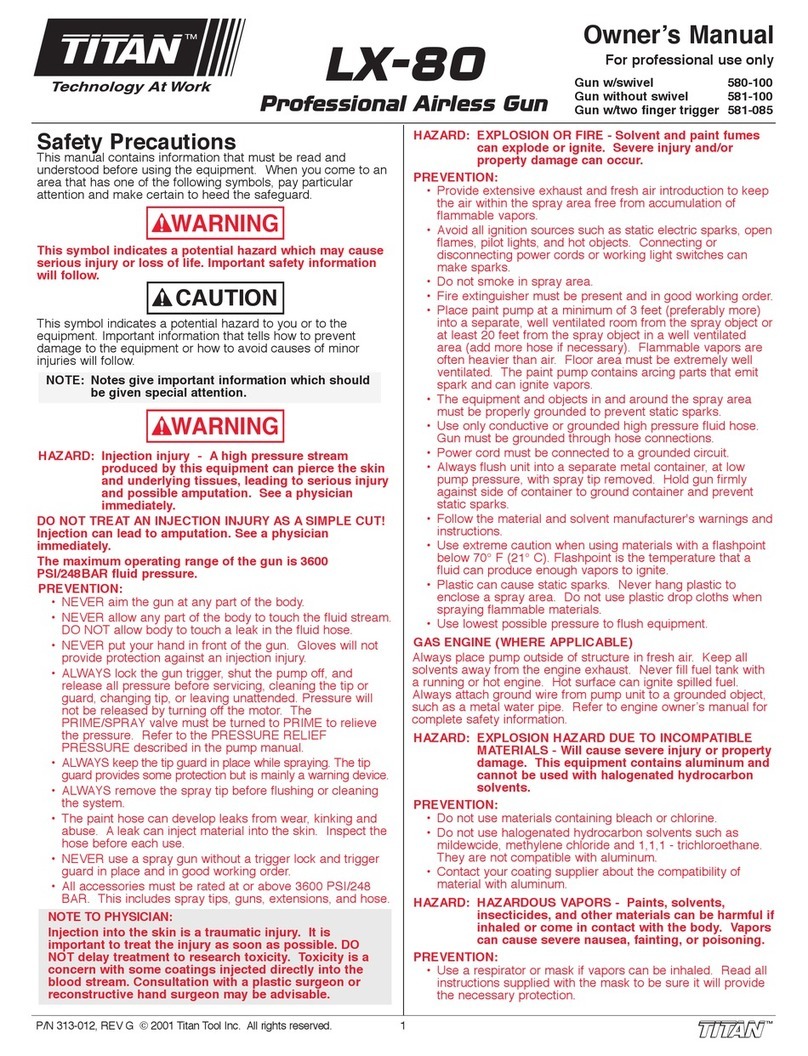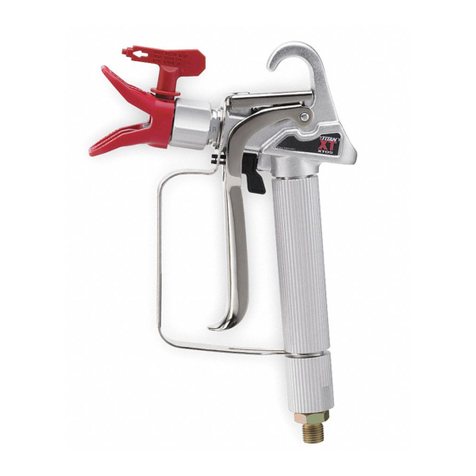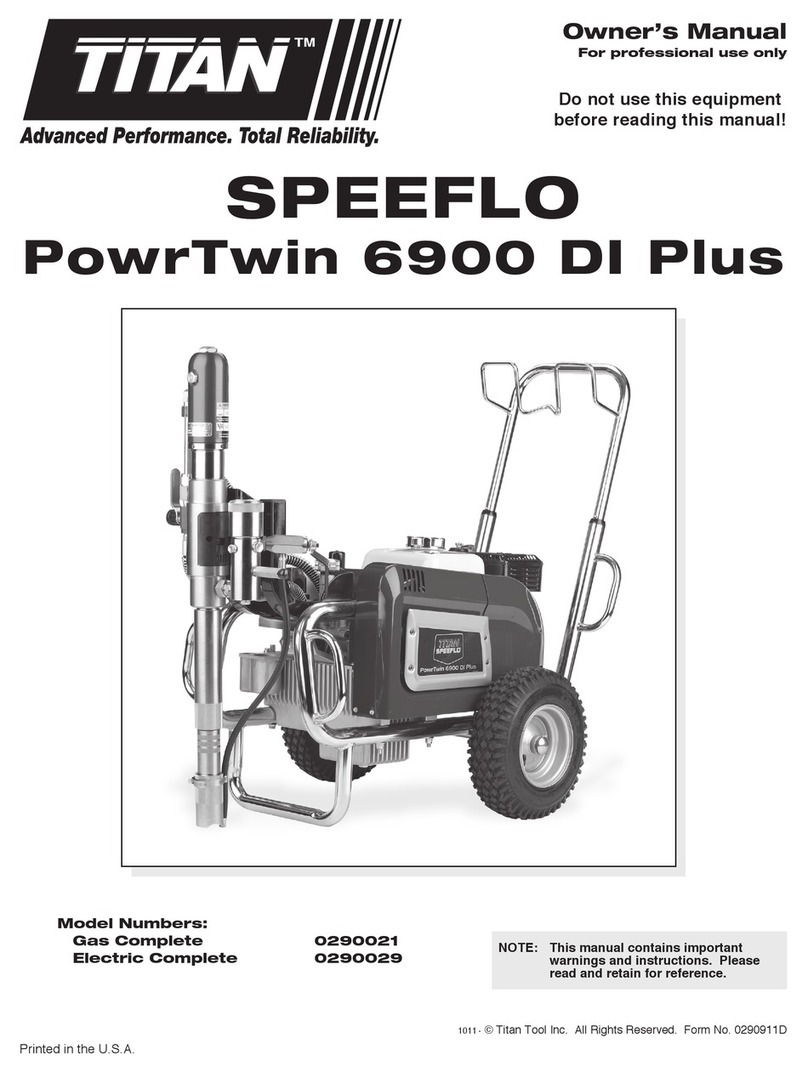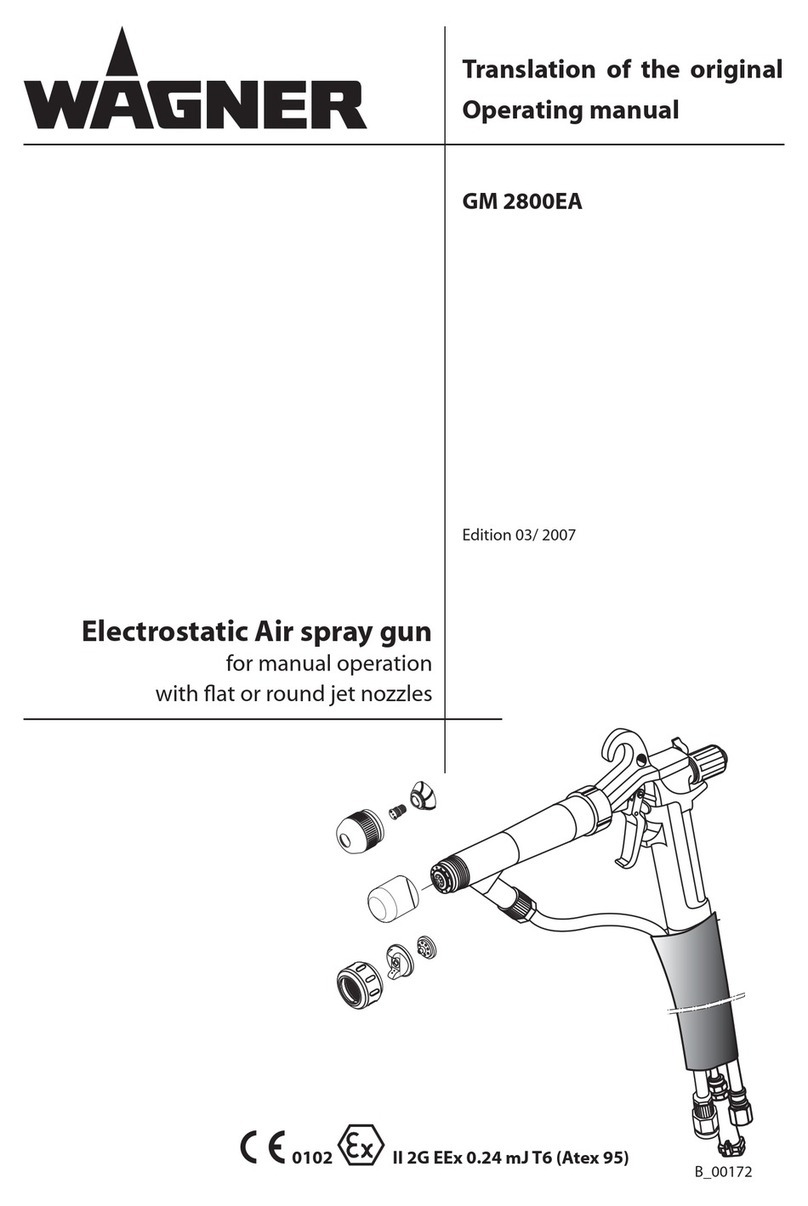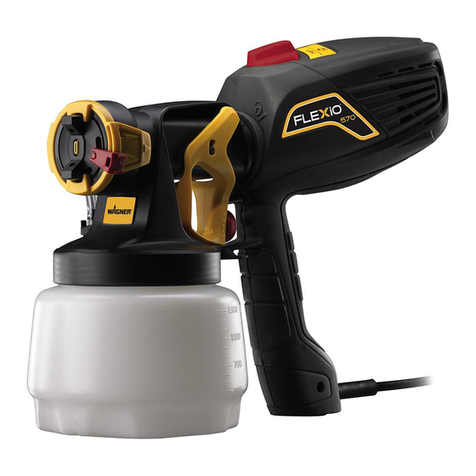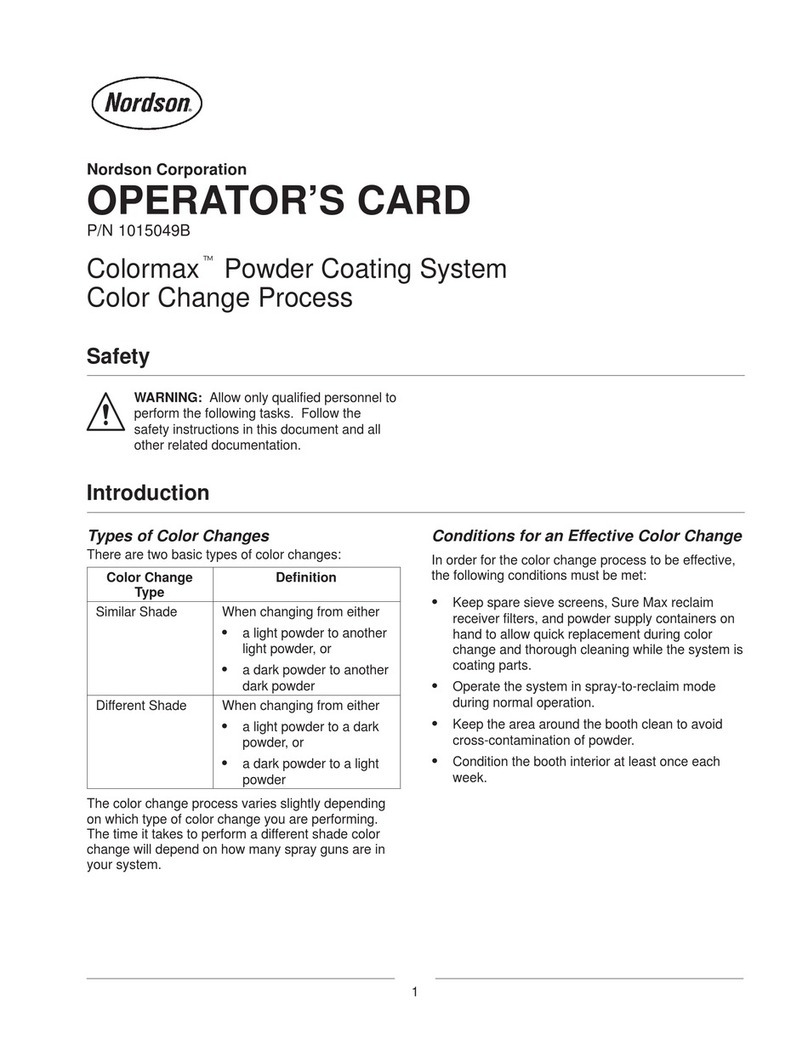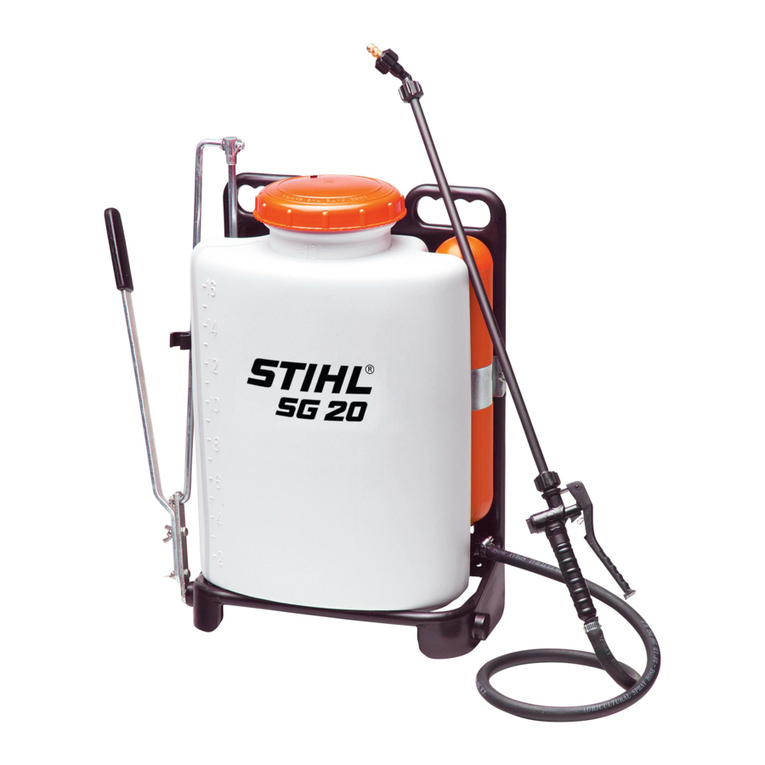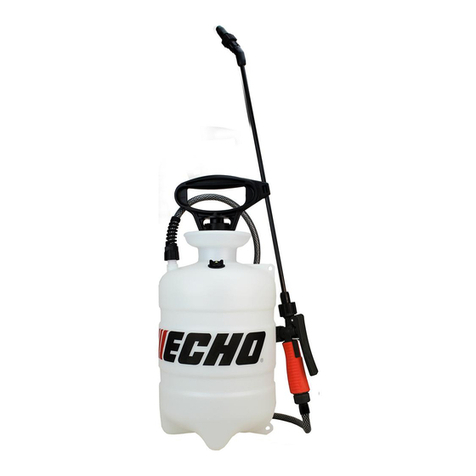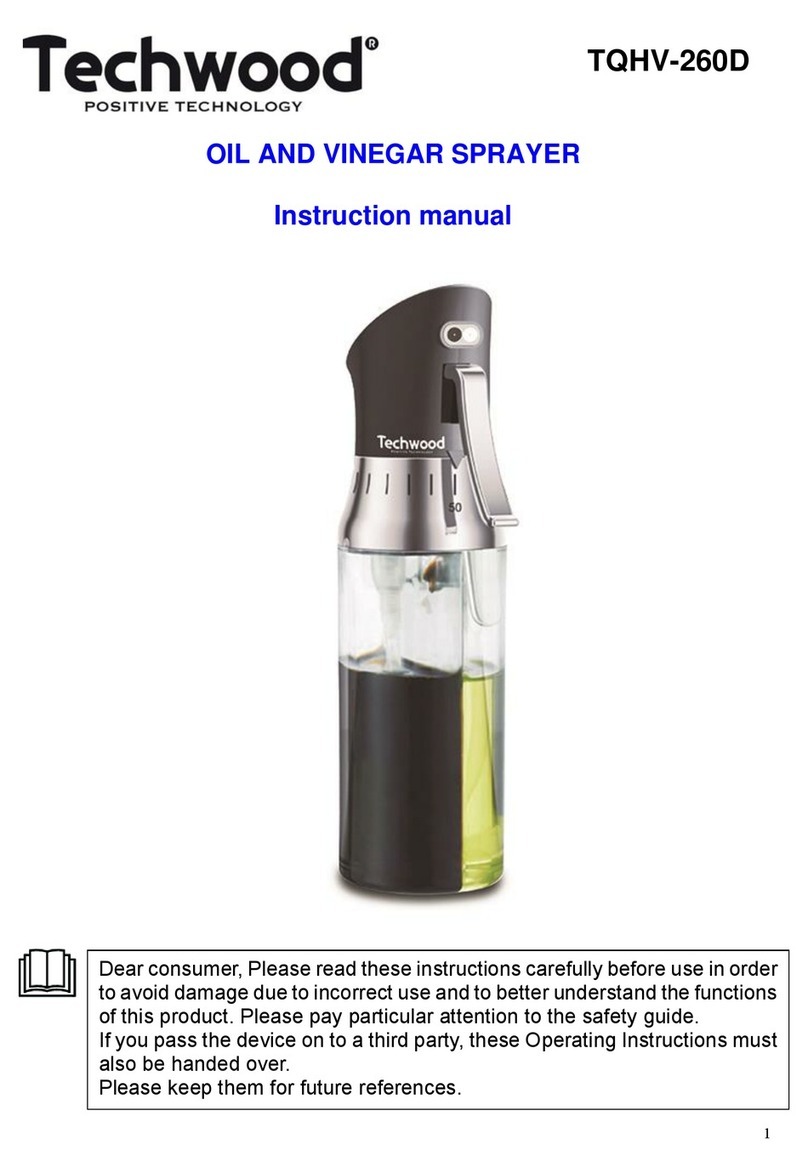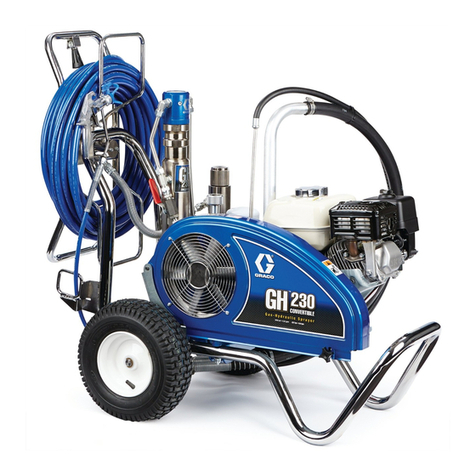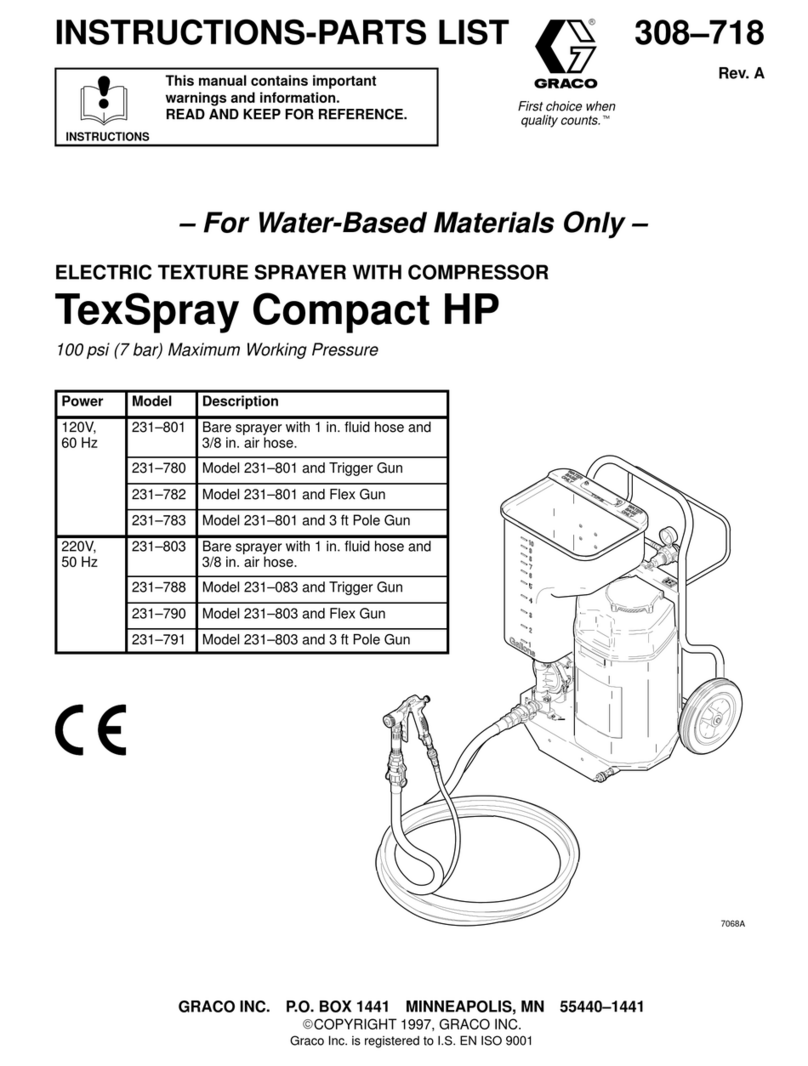
DO NOT USE EQUIPMENT BEFORE READING THIS SECTION
I
HI
H P ESSURE SPRAY
CAN CAUSE SERI
US
INJURY
Maximum Working Pressure 3000 psi,
210
bar
An
airless spray gun requires that fluid
be introduced to it at very high pressure.
Fluids under high pressure, from spray or
leaks, can penetrate the skin and inject
substantial quantities of toxic fluid into
the body. If not promptly and properly
treated, the injury can cause tissue death
or gangrene and may result in serious,
permanent disability or amputation of the
wounded part. Therefore, extreme
caution must be exercised when using
any airless spray equipment. IF YOU
ARE INJECTED, SEE A PHYSICIAN
IMMEDIATELY.
DO
NOT TREAT AS A
SIMPLE CUT!
NOTE TO PHYSICIAN: Injection into
the skin is a serious, traumatic injury.
It
is
important to treat the injury surgically as
soon as possible. Do not delay treatment
to research toxicity. Toxicity
is
a concern
with some exotic coatings injected
directly· into the bloodstream.
Consultation with a plastic surgeon or a
reconstructive hand surgeon may be
advised.
1 ) Handle the spray gun carefully.
Keep clear of the nozzle. NEVER point
the gun at yourself or anyone else.
NEVER permit any part of your body to
come in contact with the fluid stream of
either the gun
or
any hose leak.
ALWAYS keep the gun trigger safety
lever in a locked position when not
spraying.
ALWAYS
use a tip safety
guard.
2) NEVER attempt to force the flow of
fluid backward through the gun with your
finger, hand or hand-held object against
the gun nozzle. THIS IS NOT AN AIR
SPRAY GUN.
3) NEVER attempt to remove tip,
disassemble
or
repair equipment without
first doing the following:
PRESSURE
RELEASE
PROCEDURE
A.
Set
trigger
safety
in
a
locked
position.
B.
Shut
off
pump
and
unplug
electrical
cord.
C.
Release
fluid
pressure
from
entire
system
and
trigger
gun.
D.
Reset
trigger
safety
in
a
locked
position.
4)
Before flushing system, always
remove spray tip and adjust fluid pressure
to lowest possible setting.
5)
Tighten all fluid connections before
each use. NEVER exceed 3000 psi with
this unit. Make sure that all accessory
hoses, connections, swivels and so forth
can withstand the high pressures which
develop. NEVER exceed the pressure
rating of any component
in
the system.
6)
WARNING:
The
paint hose can
develop leaks from wear, kinking, abuse,
etc. A leak is capable of injecting fluid into
the skin, therefore
the
paint hose should
be inspected before each use. NEVER
attempt to plug a hose with any part of
your body, adhesive tape or any other
makeshift device.
Do
not attempt to
repair a spray hose. Instead, replace it
with a new grounded hose.
Use
only with
hoses that have spring guards. NEVER
use less than 50' of hose with this unit.
7)
Be
sure that
the
airless equipment
being used and the object being sprayed
are properly grounded to prevent static
discharge or sparks which could cause
fire or explosion. WARNING: ALWAYS
hold the gun against metal container
when flushing system with tip removed, to
prevent static discharge. CAUTION: To
reduce the risk of electrical shock,
do
not
expose to rain. Store indoors.
GROUNDING INSTRUCTIONS: This
product should
be
grounded.
In
the event
of
an
electrical short circuit, grounding
reduces the risk of electric shock by
providing an escape wire for the electric
current. This product is equipped with a
cord having a grounding wire with
an
appropriate grounding plug.The plug must
be plugged into
an
outlet that
is
properly
GROUND
OUTLET BOX
GROUNDED
OUTLET
installed and grounded
in
accordance
with all local codes and ordinances.
DANGER-
Improper installation
of
the
grounding plug can result
in
a risk of
electric shock.
If
repair or replacement of
the cord or plug is necessary,
do
not
connect the grounding wire to either flat
blade terminal. The wire with insulation
having
an
outer surtace that is green
(with or without yellow stripes)
is
the
grounding wire. Check with a qualified
electrician or serviceman if the grounding
5
instructions are not completely
understood, or if
in
doubt as to whether
the product is properly grounded. Do not
modify the plug provided; if it will not fit
the outlet, have the proper outlet installed
by a qualified electrician.
• This product is for use on a nominal
120-volt circuit and has a grounding
plug that looks like the plug illustrated
below.
• Make sure that the product is
connected to an outlet having the same
configuration as the plug. No adapter
should be used with this product.
EXTENSION CORDS: Use only a 3-
wire extension cord that has a 3-slot
receptacle that will accept the plug on the
pump. Make sure your extension cord is
in
good condition. Wben using
an
extension cord, be sure to use one heavy
enough to carry the current this pump will
draw.
For
lengths
less
than
25ft.
50
ft.
100ft.
150ft.
Use
extension
gauge
16AWG
14AWG
12AWG
10AWG
An
undersized cord will cause a drop in
line voltage resulting
in
loss of power and
overheating. If in doubt, use the next
heavier gauge. The smaller the gauge
number, the heavier the cord.
8)
ALWAYS
keep the working area
around the pump well ventilated.
Additionally, the pump itself should be a
minimum of 25' (7.5m) from the spray
area. If these instructions are not
followed, there is the possibility of fire
or
explosion with certain materials.
ALWAYS follow the coating
or
solvent
manufacturer's safety precautions and
warnings. Never spray flammable
material near open flames, pilot lights
or
any source of ignition.
9)
ALWAYS
wear spray masks and
protective eyewear while spraying.
Additional personal protective
equipme11t
may
be
required depending on the type of
material being sprayed and conditions of
ventilation. Always contact supplier of
material being sprayed for
recommendation.
1
0)
Keep all extension poles clear of
electrical wires.
11) NEVER alter or modify any part of
this equipment; doing so could cause it to
malfunction.
12) NEVER leave equipment
unattended. Keep away from children or
anyone not familiar with the operation of
airless equipment.





















